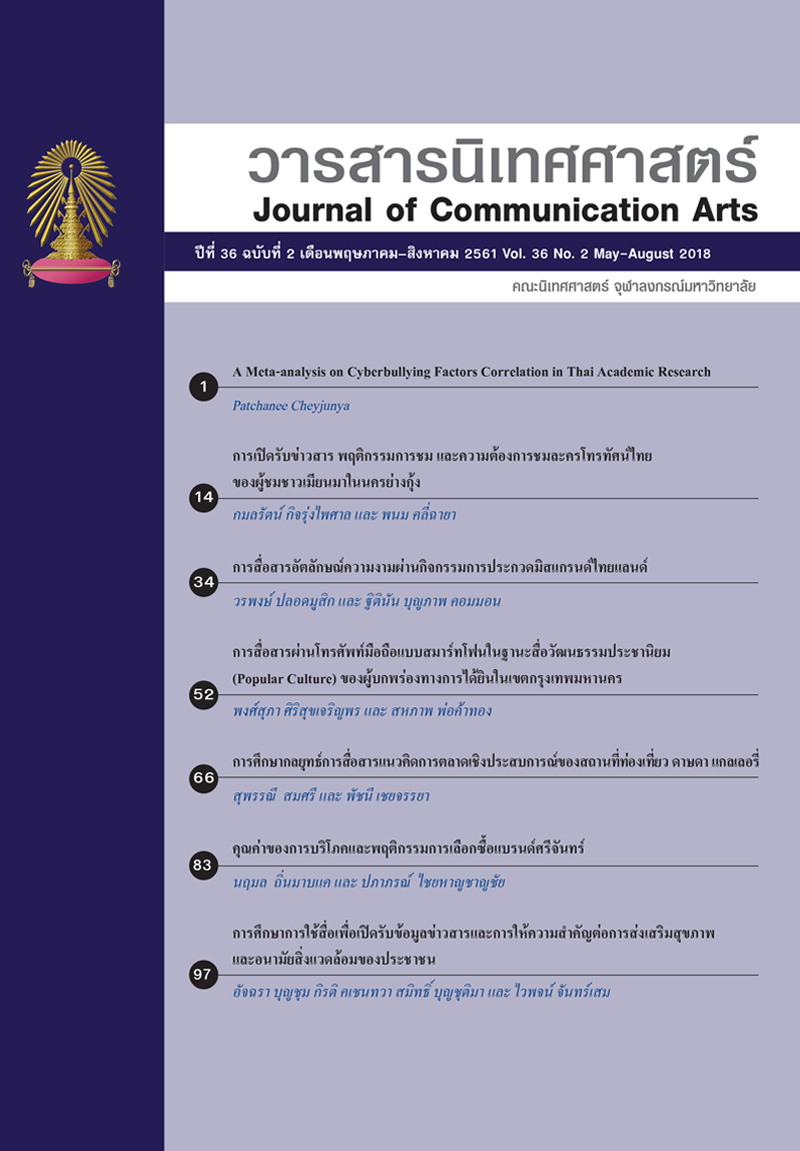A Meta-analysis on Cyberbullying Factors Correlation in Thai Academic Research
Main Article Content
Abstract
This article aims to study the trends of research and studies on cyberbullying by exploring, gathering, and evaluating all concerned academic data in three educational databases in Thailand: (1) Thai-Journal Citation Index Centre (TCI), (2) Thai Journals Online (ThaiJO) and
(3) Thai Library Integrated System (ThaiLIS). From the preliminary search, 6,679 pieces of academic work relating to cyberbullying are found; however, after data deduction, only 67 pieces meet the specified criteria. Only academic works that pass the hypothesis testing with
t-test and F-test are synthesized and analyzed towards a standard index for concluding the variable correlation. From the meta-analysis, it indicates 5 important variable groups, including 3 groups of independent variables and 2 groups of dependent variables from 394 of hypothesis testing(as a unit of analysis) Moreover, the result reveals that media exposure has the highest effect sizeand correlation coefficient (d = -1.0289, r = -0.4569).
Article Details
References
http://enough.org/stats_cyberbullying
Gerhards, J., Schafer, M. (2010) “Is the internet a better public sphere? Comparing old and new media in the USA and Germany” Sage Journals. Jan 19. Retrieved from http://nms.sagepub.com
Hofstede, G., & Bond, M. H. (1984). Hofstede’s culture dimensions: An independent validation using Rokeach’s Value Survey. Journal of Cross-Cultural Psychology, 15(4), 417-433.
Kotrlik, J.W., &Jabor, K. (2003). The Incorporation of Effect Size in Information Technology,
Learning, and Performance Research. Information Technology, Learning, and Performance Journal. 21(1) pp.1-7.
Kotrlik, J.W., Williams, H.A., &Jabor, K. (2011). Reporting and Interpreting Effect Size in
Quantitative Agricultural Education Research. Journal of Agricultural Education. 52(1) pp. 132-142.
McAfee. (2014). Teens and the Screen Study: Exploring Online Privacy, Social Networking and Cyberbullying. Retrieve May 18, 2018 from https://www.mcafee.com/us/about/
news/2014/q2/20140603-01.aspx
MethineeSuwannaki. (2017). Legal Measures to Protect Child and Juvenile from Cyber-Bullying.
Naresuan University Law Journal, 10(2) pp. 49-70.
NSPCC. (2016). What Children Are Telling Us About Bullying: Childline Bullying Report 2015/16.London, UK: NSPCC.
Ojanen, T., Boonmongkon, P., Samakkeekarom, R., Samoh, N. Cholratana, M., Guadamuz, T., (2015). “Connections Between Online Harassment and Offine Violence among Youth in Central Thailand”. Child Abuse Negl. 2015 Jun; 44: pp. 159-169.
Sawilowsky, S. (2009). New Effect Size Rules of Thumb. Journal of Modern Applied Statistical
Methods. 8(2) pp. 467–474.
Slonje, R., Smith, P.K., and Frisen, A. (2012) “The Nature of Cyberbullying and Strategies for Prevention.” Computer in Human Behaviors. Retrieved April 24, 2018, from http://www.elsevier.com/locate/comphumbeh.
The Children's Society and YoungMinds. (2018). Safety Net: Cyberbullying’s Impact on Young
People’s Mental Health. London, UK: The Children's Society and YoungMinds.


